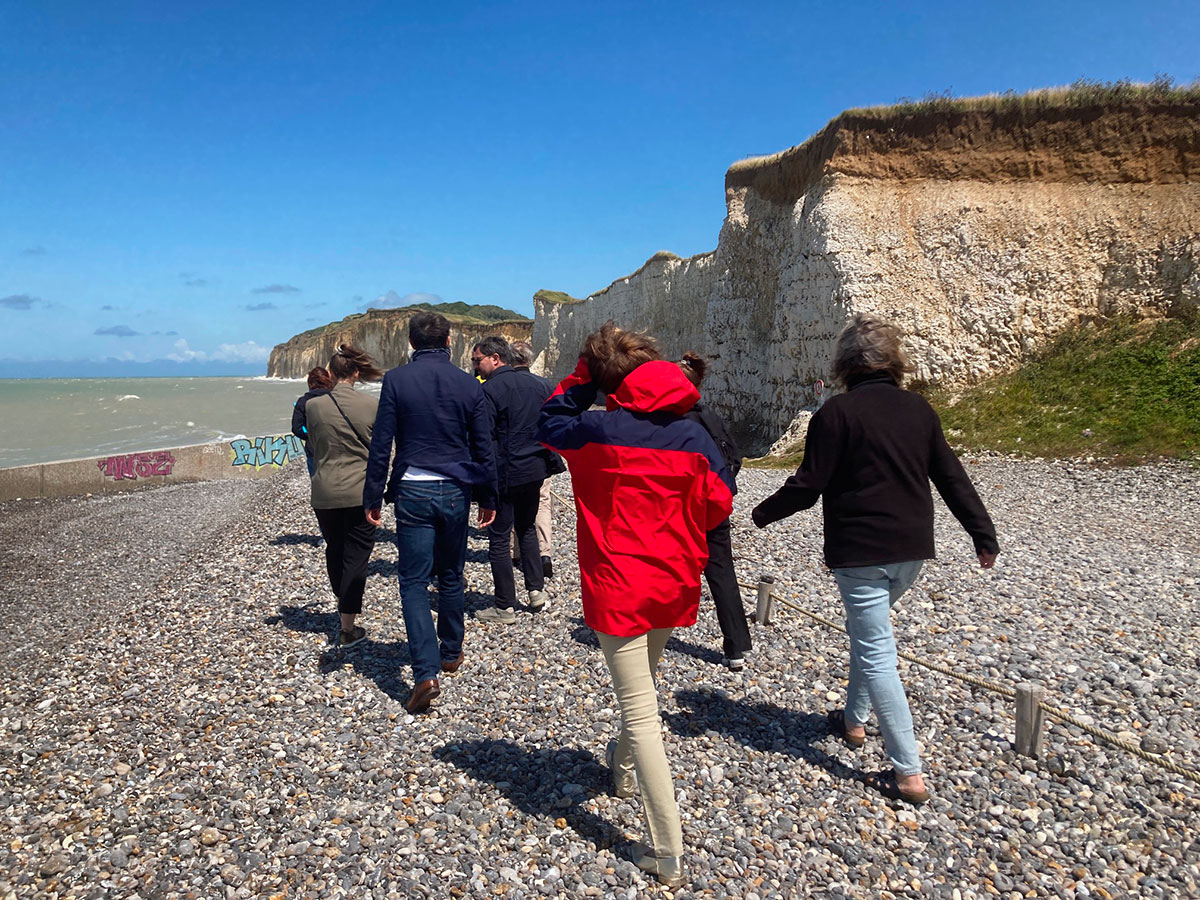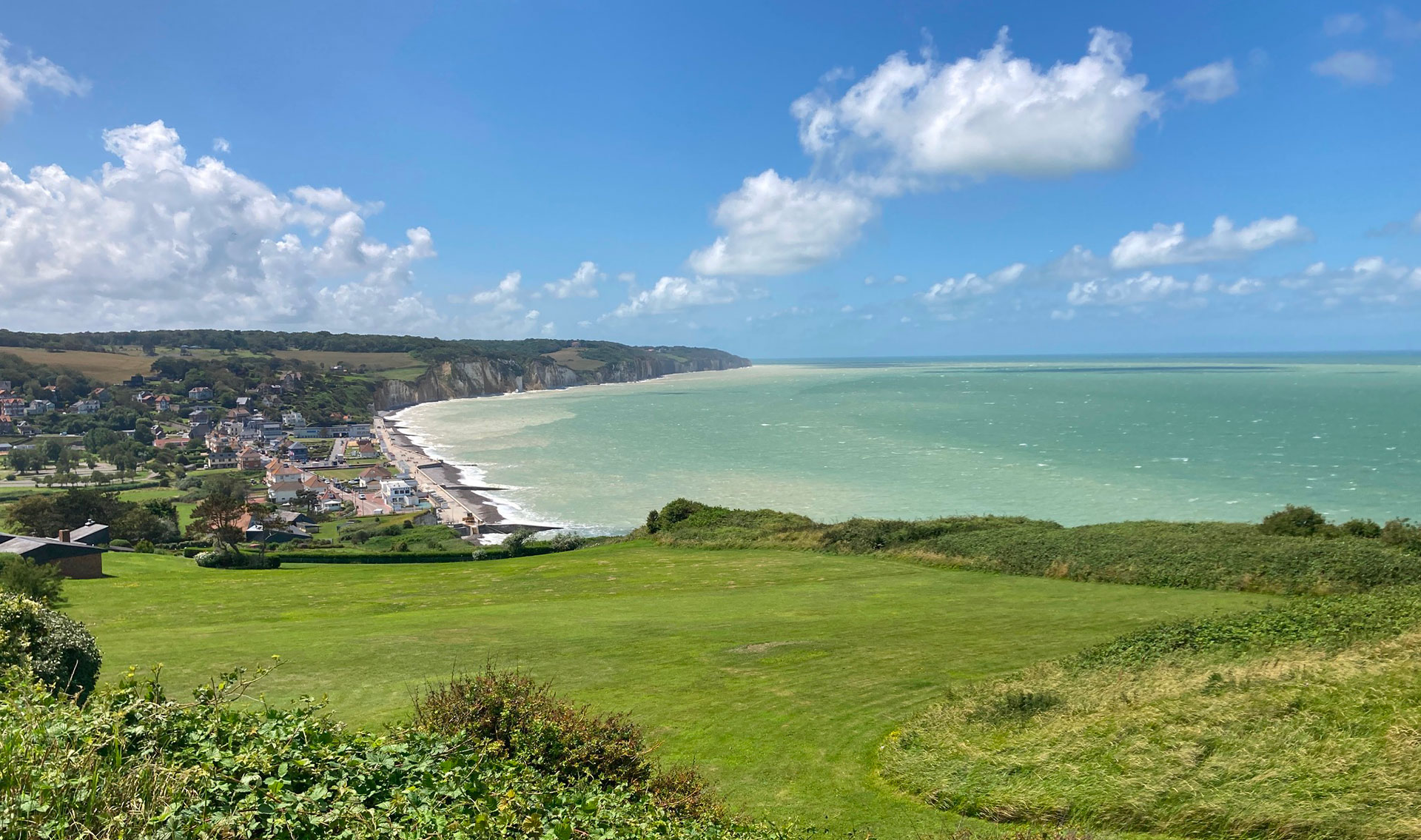9th SCO France meeting
Hosting this ninth session of SCO France, Philippe Lemaire, Deputy Territorial Director of Cerema Normandie Centre, spoke of the twofold challenge currently facing the Centre for studies and expertise on risks, environment, mobility and development (Centre d'études et d'expertise sur les risques, l'environnement, la mobilité et l'aménagement): "the first challenge, which is specific to Cerema, is to put in place changes to its governance, since we are now both a national and a local institution. The other challenge is adapting to climate change, a shared challenge in which Cerema is positioning itself as a major player [to] offer integrated approaches to territories. [...] To do this, we need models and satellite data, the core of the SCO's work: to measure, monitor and understand phenomena, but also to assess the effectiveness of the actions that will be taken, given that the economic and human stakes are immense. We have no room for error”.
The morning session
After an international review of the first half of the year, the members of SCO France discussed their own results:
- 61 projects, 18 of which have been completed, in line with the initial contract, which provides for rapid development. These projects are being implemented in 28 countries, thanks in particular to the partnership with the IRD, which is present in many parts of the world.
- The second SCO France Congress, held on 30 May 2023, was a great success, with participants enjoying a sneak preview of the film.
- Focus on the two main types of operational services generated by SCO projects: those that enhance the value of science, essentially supported by laboratories and whose tools are freely available, and those that are commercialized, supported by companies with an economic model designed from the outset of the project.
- This observation confirms the growing and predominant role of the private sector in the Earth Observation sector. In particular, reference was made to the increasing number of private constellations in the coming years, which will provide other types of data, some of which will be useful for SCO projects.
After an update on the implementation of the call for projects, which opens in September 2023, the participants also discussed the short- and medium-term outlook, including:
- Approve and support an average of 10 new projects per year;
- Supporting projects "after SCO" by continuing to promote the operational solutions developed;
- Develop partnerships, particularly financial and technical partnerships;
- Continuing to work on the link between research and the development of climate services;
- Make the link with the development of the French National Climate Change Adaptation Plan.
The morning ended with the presentation of 4 projects: EO4Wetlands and Pléiades4UrbanFlood, respectively presented by Cyrille Fauchard and Teodolina Lopez from Cerema, EO4InterTopo presented by Benoit Laignel from UMR M2C (University of Rouen) and REVE Côt, introduced by Stéphane Costa from UMR IDEES (University of Caen).
While the first three projects have been awarded the SCO label, REVE Côt is not, but could well become one: it offers a virtual reality tool to raise awareness of the risk of flooding among decision-makers, developers and residents of coastal towns. The video shown during the session is impressive: it simulates the storm of February 1990 in a street in Étretat, with an additional meter of water above sea level. The wave suddenly breaking in this quiet street overcame the doorsteps in a matter of seconds before reaching the windows just as quickly. In view of the excellent feedback generated by this video, the project team would like to go even further, in particular using spatial data, both to improve knowledge of the marine flooding hazard and to facilitate the technical deployment of the tool, particularly for 3D urban reconstruction.
A video to raise awareness of the risks of marine submersion © Cireve
Afternoon visits
The CIO members present in Rouen travelled to Pourville and Sainte-Marguerite-Sur-Mer (Seine-Maritime) for a personal presentation of work on cliff erosion, carried out by the ENDSUM team at Cerema (C. Fauchard), the LETG at the University of Western Brittany (Pauline Letortu and Zoé Bessin) and IDEES at the University of Caen (Stéphane Costa).

Discovering the cliffs of Sainte-Marguerite-sur-Mer. © SCO
-------------
The Inter-Agency Committee (CIO, Comité Inter Organismes) brings together the 24 member institutions of the SCO in France. It meets twice a year for a six-monthly review and to look ahead to the next six months.



